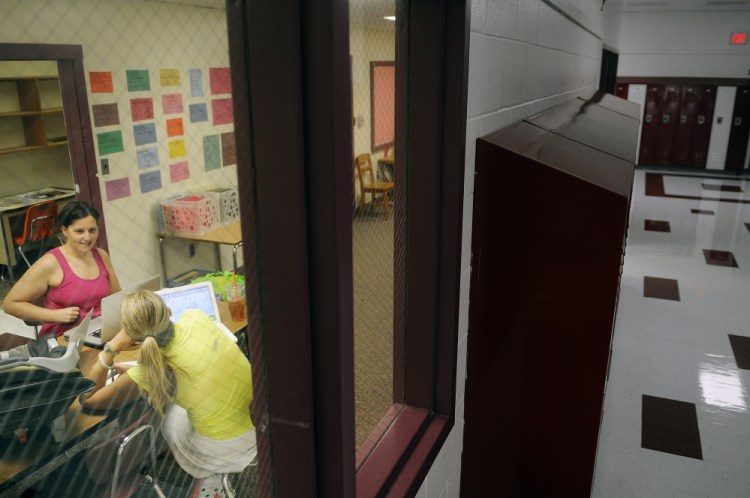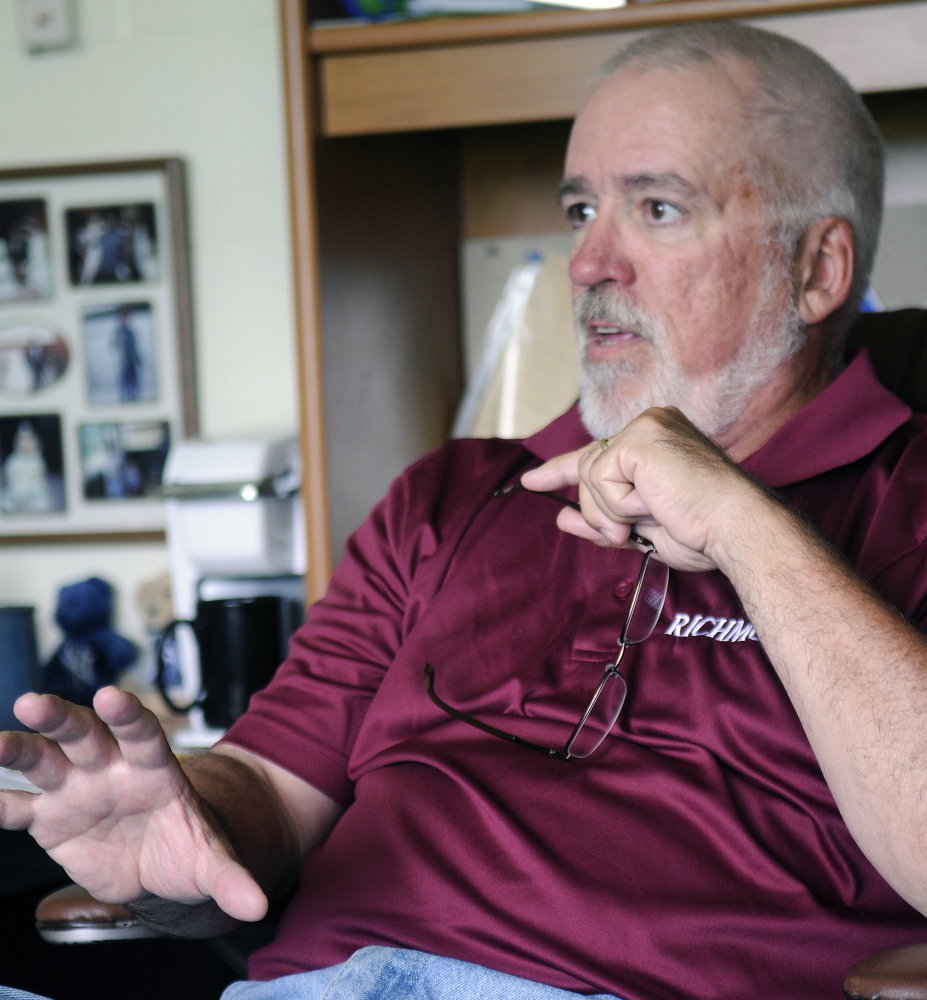When Richmond school and district administrators heard the high school received a grade of F from the state in May, they weren’t surprised.
They already had seen the standardized tests scores on which the grades were largely based, but the principal at the town’s middle and high schools said it was still unpleasant for the school to be labeled with an F.
“I knew it was coming,” Principal Steve Lavoie said during a recent interview at his office. “It’s almost like getting slapped twice. You see the data and you know, intuitively, that you didn’t do well.”
Lavoie said the schools reacted to low test scores almost immediately with more standardized test preparation work, but any potential progress by the school won’t be reflected soon in a grade from the state, because the state won’t be issuing new grades next year.
“It’s really unfortunate that we don’t do a report card to allow us to get recognized for some growth,” he said.
Education Commissioner Jim Rier said in May the state won’t issue report cards next year because of the switch to Smarter Balanced Assessment Consortium tests, which start next spring.
Rier, who took over the position permanently this year, said in May that the gap will give the department time to ensure the system is measuring the right things. The department had plans to organize a stakeholders group next year to review the system.
Regardless, the school is taking steps to improve in the academic year beginning next week, especially in the subject of mathematics, in which the high school captured only around 10 of the 100 points possible for proficiency.
Only 10.7 percent of Richmond High School students scored proficient or greater on the 2012-13 Maine High School Assessment and the 2012-13 Personalized Alternate Assessment Portfolio, according to department.
The middle and high school added a mathematics teacher, bringing the total to five, and will begin offering a mathematics laboratory to assist students in their current work as well as with topics they should have learned previously. Also, by combining the middle and high school schedules into one, the schools can be more flexible with what classes students can take, Lavoie said.
The reshuffling has allowed the schools to offer a similar laboratory for language arts and reading, he said.
“We’ve got kids in the pipeline that we’re pushing to demonstrate proficiency, that have holes in their learning from years before, and that’s interfering,” Lavoie said. “So what we need to do is not only push them at the level they’re at, but we need to find a way to identify and remediate the holes in their learning because it’s still getting in the way.”
Paige Doble, in her second year as a mathematics teacher at the high school, said the mathematics laboratories will allow students to work on skills they might lack. She said concepts such as basic multiplication and fractions are often difficult for some students, and the students end up struggling in more advanced classes if they don’t have a grasp on the earlier concepts.
The school switched to a standards-based grading system a few years ago, and Doble said it’s been a learning curve for both students and teachers.
The Richmond elementary, middle and high schools also will begin to implement personal learning plans for their students this year. It will involve asking students their career goals and helping them pursue paths to those goals — whether through vocational classes, traditional course work or internships, Lavoie said. Internships, which three high school students are doing this year, will provide students opportunities to experience potential careers while getting school credit for achieving proficiency objectives, he said. Another goal is to make schoolwork more meaningful, Lavoie said.
Virgel Hammonds, superintendent of Hallowell-based Regional School Unit 2, said the personal learning plan is something that’s been discussed for about a year and isn’t being implemented because of the low grade from the state. He said the smaller class sizes in Richmond compared to other schools in the district allow for more individual advising for students.
“We’re always trying to be proactive in how do we best support our kids all the time,” Hammonds said. “This isn’t a result of that score. It’s because we know it’s what’s best for our kids.”
The Maine Department of Education began issuing the A-to-F grades for elementary, middle and high schools in May 2013 after Gov. Paul LePage highlighted the educational reform in his State of the State speech that year.
Critics, including educators and Democratic legislators, say the grading system is flawed, and the have noted a strong correlation between low grades and a school’s poverty rate.
In the grades the state released this May, 93 schools received higher grades and the grades of 153 dropped. The most common grade was a C, received by 47.5 percent of high schools and 50.4 percent of elementary and middle schools.
Richmond High School went from a C in 2013 to an F in 2014, and the middle school stayed at a D.
Recent questions about the scoring system were referred to Rachelle Tome, chief academic officer for the department, who didn’t respond to requests for comment.
Lavoie said there’s no question that Richmond had poor test scores, which were reflected in the high school’s grade. But more recent scores have been better, he said.
“It’s all about growth, and we’re starting to show growth,” Lavoie said. “As difficult as it was to see those scores and then see the report card, it’s encouraging to see growth and know that we’re on the road for more improvements.”
Paul Koenig — 621-5663
Twitter: @paul_koenig
Send questions/comments to the editors.




Comments are no longer available on this story